What Is SPC Flooring? Some Facts You Might Need 2024
“What is SPC flooring” is not an uncommon question since this kind of flooring is prevalent worldwide. Yet, if you still cannot find detailed introductions about it on the Internet which can satisfy you, consider mine! It will not be a waste of time.
If you are wondering if you should install this type of floor into your house, the information below can help you have a deeper look at them and make a choice you won’t regret later!

SPC Flooring 101 – General Identity
SPC, which stands for stone plastic composite, is a type of vinyl plank flooring that started appearing on the market in the 1970s. Every vinyl floor has a similar structure: ultraviolet (UV) film – transparent wear layer – decor film – reinforcement – the base (foam or cork).
The difference of SPC is at the reinforcement layer that is made of SPC core; here are the details you can refer to:
- Ultraviolet (UV) film: helps the floor to stand under UV rays from sunlight.
- Transparent wear layer: offers a scratches resistance ability for your floor.
- Decor/Color film: provide beautiful printed colors and patterns.
- SPC core/layer: is highly rigid, stable, and waterproof, made of high-density calcium-polymer compounds (limestone powder + polyvinyl chloride + stabilizers).
- The base/backing layer: is usually made of foam (specifically IXPE and EVA foam) to offer cushion-like effects and even moderately soundproof.
Don’t hesitate! Let’s find out more about SPC flooring with an expert introduction!
The Advantages Of SPC Floors
We have talked about the layers of SPC floors; now, let’s turn to the benefits that those unique layers lend to your house.
1. Waterproof

The first and also the most significant advantage when talking about SPC floors is their incredible waterproof ability. Some manufacturers even advertise their products as 100% waterproof, and I think that is true.
Unlike most other wood-made floors, this type of floorings is a perfect choice for places with high humidity (laundry room/bathroom/kitchen), thanks to the non-water absorbent rigid core.
If you are choosing an ideal flooring for your cozy family restaurant, consider these SPC floors.
The proof of the highly water-resistant ability that SPC rigid vinyl flooring offers! You can see this video to know more:
2. Endurable Under Temperature (Not Concentrated)
The next benefit also comes from the rigid core; these specific SPC cores help your floor preserve the stable status and unchanged under rapid temperature fluctuation (from AC or underfloor heating systems).

3. Effortless Installation
There are two most common ways to install SPC floors, which are gluing down or loose-laying. While installing your SPC floors by gluing are pretty complicated yet cheaper, loose-laying is a bit more costly but absolutely quicker.
4. Very Affordable
With the delicate, elegant look, you might not expect SPC rigid vinyl floors to be this affordable.
Compared to the various other floors like hardwood and stone, installing SPC floors helps you save money yet offers a similar look and even better selling points (stains and water resistance, no place for fleas, and so on).

5. Attractive Look
Vinyl floors, in general, are renowned for their versatile looks, styles, and patterns; SPC floors, in particular, are not exceptional. They can have a stone look, hardwood look, or any other designs you can choose from based on your decorating purposes.
6. Noise Insulation/Reduction
The dense structure of SPC cores lend a significant advantage in muting and eliminating unwanted sounds for this kind of flooring. It is not 100% effective, but at least the hollow sound is undetectable.
7. Comfortable Feel
Their base layer is made of foam, which can lend a cushion-like feel when you walk on it. You can choose ones with a thicker foam base to have a more comfortable feel underfoot.

8. Simple Maintenance
Nothing to argue about this; SPC floors require the least maintenance. It is effortless to keep your floors clean and gleaming since all other risks to ruin them have been minimized (scratches, impacts, pressure, water, wear out and tear apart).
All you should do to maintain them are frequently vacuum, sweep, and mop. Some more detailed tips can be referred to in the last section.
The 6 minutes review about several appealing verified advantages of SPC flooring.
Some Drawbacks You Might Need To Consider
It will be a one-way introduction if you just talk about the strengths of the SPC floor. Therefore, I will also talk about the weakness of this floor to give you a better overview of it.
1. Less Value Upscaling For Your House
To make it clearer, SPC might offer less value to your house, but only compared to higher-value floorings such as hardwood, laminate, and luxury vinyl plank.

2. Eco-Friendly? Maybe A Bit Less
Vinyl is plastic. Although SPC floors are now made of recycled materials, they cannot be considered more environmentally-friendly flooring like hardwood, bamboo, or cork.
But the idea of using only recycled, low-emitting materials to create a whole new product is excellent and should be used in other future products from a variety of fields.
Answering Your Big Question: How Different Are SPC, WPC?

Before mentioning the differences, I have to talk about their similarities. They have many similarities: waterproof ability, durability, effortless installation, their looks (which make people usually mistake between them), and their applications.
These two kinds of vinyl floors are renowned for their high resistance to water or liquid since they all consist of a rigid core. This core also creates similar durability (under impact/heat/pressure), leading to the several same places to be installed.
Furthermore, the wear layers can lend both of them a great stains resistance ability which is absolutely fit for their uses in the bathroom, kitchen, or high traffic places in your house.
They can both offer the stone or wood-like look due to their decor films, making the next similarity in their styles. Now, with enough similarities, we should move on to their differences which are also the main points of this section.
1. The Core Components
Like their names, SPC stands for stone plastic/ polymer composite while WPC stands for wood plastic/polymer composite.
The names tell their differences; SPC contains limestone in their core which differs from WPC that contains some wood-like material or wood flour in their core. This feature also leads to other differences between them.
2. Plank Thickness
On average, the thickness of SPC is only around 3.2 – 7 mm, which is a bit thinner than WPC (approximately 5.5 to 8 mm). The cushion-like base is the leading cause; this part of WPC is usually thicker than SPC.
3. Comfortable Feeling And Temperature
To tell the truth, WPC floors offer a better comfortable feeling underfoot compared to SPC. The core of WPC floors is usually thicker, leading to a more soft, resilient feel.
Furthermore, this thick core can act as a spacer and retain the warmness in cold weather while it might be pretty cold to SPC (SPC cannot hold much heat because of its thin core).
4. Durability
Even though SPC floors are thinner, their rigid core is denser and tougher than the wood-like core of the WPC floors. Therefore, the toughness and durability, SPC flooring is one of the strongest and obviously wins in this aspect.

5. Sound Insulation
Nowadays, both SPC and WPC have acoustic backings, which enhance their sound insulation ability nicely. Yet, the base of WPC is still usually thicker, and their ability in this aspect is a bit better than SPC.
You cannot detect much sound while walking on both of them, but it will be a bit quieter walking on WPC.
6. Stability And Price
SPC floors perform a better effect under temperature fluctuations compared to the WPC. They can resist the regular contract and expand effects under heat thanks to the unique dense core.
Last but not least, SPC flooring is much more affordable than WPC flooring on the market. If you think you have found a cheap deal of WPC, be careful and check if they are genuinely WPC or just SPC floors. Both of them are good, but you don’t want to be fooled, do you?
7. Uses
SPC, with its tough core, is suitable to be installed nearly anywhere and best to be used at high traffic areas or put under heavy furniture. Some suggestions for SPC uses are living rooms, bedrooms, hallways, or some commercial areas like restaurant floors and so on.
Meanwhile, WPC requires more delicate use since they are easily dented under heavy objects. Therefore, places such as bathrooms, toilets, or else might be better for them.
You can see this video to know more:
How About Laminate Floors Vs. SPC Floors? How Different Are They?
Another “sibling” looks just like SPC floors, laminate floors. Let’s indicate some differences.
1. The Core Components, Thickness, And Environmental-Friendly

They might have slight similarities in the structural layers since they both have the base, decor layer, wear layer, and core.
But their main difference is also at the core. While SPC flooring has its core made of SPC (contains limestone), the laminate floors have cores made of HBF fiber.
The thickness of the core also causes their difference in thickness. The compacted SPC cores help this type of flooring have a thin look (only 1.5mm to 5mm of thickness). On the other hand, the wooden core boards of laminate floorings are quite thick, up to 6 or 12mm.
But the wooden cores bring a huge benefit when using laminate compared to SPC floors, friendly with the environment. Even 80% of the discarded laminate can be reused and made into new flooring. At the same time, the unused SPC floors cannot be recycled.
2. Average Warranty
There is a huge difference between the warranty of laminate and SPC flooring. While laminate floors are only under warranty for roughly 5 years, SPC flooring usually enjoys a warranty plan of up to 25 years.
3. Water-Resistance And Suitable Cleaning Method

Laminate floorings are not water-resistant since their core is made of wood materials. Conversely, made of all synthetic materials, SPC floors can stand well under moisture and water.
Due to this difference, laminate floors should not be mopped with a watery mop and contact with too much moisture. But you can freely do this with your SPC floors.
4. Soundproof
As you know, SPC floors have foam bases (or similar material) that help this type of flooring absorb sounds/noises quite well. But the story is different with laminate floors, the noise caused by walking on it is pretty sound, and they cannot eliminate that.
5. Terminates Problems
As I have mentioned, laminate floors have wood-made cores. Therefore, they have the risk of being ruined by pests or terminates. That problem, on the other hand, won’t occur on SPC floors thanks to its hard solid core.
6. Their Prices And Resale Values

In the market, laminate floorings are generally more expensive than the SPC types. Maybe the luxury variants of SPC floors can have roughly similar prices with laminate.
Although their resale values (which are indicated by how much house upgrading effects they can offer) are not quite good, compared to 100% hardwood floors, they are still at a “good” level. But SPC floors are not that fortunate; their resale values are not as good.
7. Their Uses

Never use laminate floors in the high humidity areas, such as the bathroom, toilet, kitchen, and laundry room (where can be the perfect placements for SPC floors).
Once they are exposed to excess water in those areas, laminate floors can be rotten, bent, or curled at the edges.
Tips To Install SPC Flooring At Home
Do you want to know how to install your SPC rigid vinyl flooring at home perfectly? It will be effortless to do; you just need to follow my guidance strictly.
Do Good Preparation
The key point to having a perfect DIY SPC flooring installation is to do good preparation.
Step 1: Checking The External Factors
You will need to ensure these things are ready before installation:
- Check if your subfloor is suitable for SPC flooring. The over-loose lay or soft floors such as cushion SPC, floating laminate, needle felt, carpet or parquet is definitely not compatible with SPC flooring.
- No interfering things on the floors. You should move loose furniture/ room decorations/accessories to another area. Even skirting or trim should be moved, too.
- No temperature fluctuation within the 24 hours before and 48 hours after the installation. You should keep the temperature change amount minimized to the maximum of 5 degrees C, no more than that is acceptable.
- Keep the temperature at 15 degrees C before installing and remain at the room temperature around 18 degrees C to 27 degrees during processing.
- Completely clean and dry base/subfloor. Any excess moisture will create bulges or unwanted hydrostatic pressure.
- No cracks or lumpy surfaces. If there are some, get rid of them with sandpaper (to sand the uneven part and have a smooth, flat surface) or fill them up with cement patches.
- No dust, dirt, wax, greasy stains like oil marks, or other types of stains, chemical substances. You should also clean mold or mildew thoroughly and entirely on the sub-floor.
- No loose parts; try to nail them down. Make sure there is no nail protruding after all.
- Block all the sunlight. Cover all the doors, windows with curtains, or anything else before and during the adhesive curing process.
After checking all of these six notes, move on to the next step!
Step 2: Necessary Utensils Preparation

You might not want to run out to find the right equipment in the middle of the process; then, having these things prepared will help a lot:
- Pair of sharp scissors/Stanley knife/SPC cutting knife
- Bolster chisel
- Measuring tape
- SPC adhesive (refer to floors’ manufacturer suggestions)
- Lining paper
- Homemade scribing gauge
- Pencil
- A straight edge
- Underlayment (refer to floors’ manufacturer suggestions)
Notes: You should read the product warranty from the floor producers to check if there is any insurance policy if your installation fails following their guidance and ruins your floor. It also helps you to make the right decision on choosing a type of flooring to apply.
Step 3: Highlight The Planned Layout
You need to make a plan on what you will do with your floor. Ensure to measure, mark and physically highlight the rough desired layout and follow it to have a better result.

Step 4: Wear On Some Knees Protection
You will have to kneel during the installation process, so don’t forget to protect your knees with at least two protection pads.
Have you done all four protection steps? Don’t let you wait anymore! This is what you should do to install your own SPC floor!
Plank SPC Flooring And The Right Way To Install
The way to install SPC plank flooring is quite different from what to do with the sheet type. Now, you should follow these steps closely.
Method 1: Click-Clocking/Floating

This method is the easiest for a non-professional to install your SPC floor at home. If you want to apply this method, you should choose those SPC plank types with interlocking designs.
- Step 1: Measure the shape of your targeted area and adjust (cutting with scissors/knife) your floor planks’ shapes to fit that.
- Step 2: Start from the corner of the room. Always leave space of 2mm to the edge of the wall when dealing with the plank at those positions.
- Step 3: Use your hand force to push the locks together gently.
Note: Don’t rush and use the hammer while locking the planks together, or it will ruin the connection. You can also consider horizontally designed SPC floor planks for easier installation.
Method 2: Gluing Down

Since the method requires using adhesives, the moisture on the sub-floor is vital and affects a lot. And different types of subfloors differ in their needed moisture to keep the adhesive stick on them perfectly. For example:
- Cement: under 2.5% CM
- Wood: under 10% CM
- Anhydrite: 0.5% CM
Notes: Never mix many types of adhesive! Refer to manufacturers’ suggestions about the adhesives (their required moisture on the subfloor and all the temperature restrictions of the adhesives to follow before installation).
Now, moving on to the installation steps:
- Step 1: Start with the corners, do the same as the click-clock method. Use the hand force to push the planks onto the glue.
Don’t use any other external forces from straps or clamps to hold your planks stick together. It might de-form your whole floor after all. - Step 2: Continue with the rest of the area.
This is how experts install SPC floors you might want to refer to.
Confirmation: There are also sheet SPC floors, but it is pretty troublesome to accomplish all the steps yourself if you are not used to them. Because of that, if you want to install sheet SPC floors, I suggest you hire a professional service.
Further Notes
After installation, you should:
- Keep the processed area’s temperature stays above 2 degrees C and under 40 degrees C.
- Keep your SPC floors plank flat.
Most Suggested Ways To Clean Stains/Marks On SPC
I have covered the information about SPC floors’ identity, tips to install, and many more. Now, let’s move on to the next concern you might have with this type of flooring, clean them!
1. Don’t Forget To Clean After Installing
Always clean after your SPC rigid vinyl floors installation. If you don’t know how to do it yet, here are my suggested steps.

You Should Have:
- A bucket
- Warm water
- Mild, pH neutral detergent/dishwashing soap
- A soft-bristles broom
- A sponge
Solution mix: Blend 1 cup of detergent or dishwashing soap with warm water in the bucket.
How To Do:
- Step 1: Sweep your floors a bit first to remove the dirt, debris, and particles.
- Step 2: Dampen a clean sponge with the solution mix and gently mop your floor surface.
- Step 3: Use a damp sponge with water to take off the soapy residue and continue to use another dry sponge to take the excess water off your floor later.
2. Spills Cleaning
The most straightforward way to get rid of the spills is to immediately find a clean cloth and clean up the running spills. After that, rinse the spots with a damp cloth (+water) and re-wipe the areas until they are dry.
You can solve most of the spill problems this way, absolutely quick and easy!
Option 1: Liquid, Food, And Grease Spills
These are some of the most common spill problems you can encounter daily. Although most of them can be solved, you can try this option to tackle the more stubborn ones.
You Should Prepare:

- SPC floor cleaner (refer to the manufacturers’ suggestions)
- Water
- Isopropyl alcohol/mineral spirit
- Clean, white cloths
- Lemon juice/cream of tartar
Solution mix: Create the cleaning mixture from the floor cleaner following the producers’ instructions.
How To Do:
If the spills are regular food spills, juices, or wine, you should:
- Step 1: Use a clean cloth you have prepared to blot up the running liquid.
- Step 2: Dampen another cloth with the solution mix and continue to wipe the dirty areas. Continue doing until you can hardly detect any trace of the spill left.
- Step 3: Rinse the residue with a damp cloth (+water) and make sure to dry the areas with another dry cloth later on.
If there are hard stains from stain marker/ pen, lipsticks, or light paints’ marks, you can:
- Step 1: Remove any big particles or solid parts out of your floors first.
- Step 2: Dampen your cloth with the mineral spirit or isopropyl alcohol, use it to clean the stain by gently wiping.
If the stains are rust marks, replace mineral spirit/isopropyl alcohol with lemon juice or some cream of tartar. - Step 3: Use another dry cloth, then dry the residue off your floor after satisfying the result.

Option 2: To Paint Marks Or Varnish
Paint marks or varnish stains seem to be the last things you want to see happening with your SPC flooring or any other type of floor. Don’t panic and do these steps.
You Need To Have:
- Eraser
- Isopropyl alcohol
- Clean, white cloths
- Mineral spirit/turpentine (odorless is better)
- Acetone contained nail polish remover (liquid)
- A soft scrubbing bad
- Floor cleaner (refer to the manufacturers’ guide)
Solution mix: Create the floor cleaner mixture following the producers’ instructions.
Note: Don’t use abrasive cleaning utensils that can adversely affect your SPC floor.

Step-by-step To Do:
- Step 1: Use the eraser you have prepared or your finger to rub the stained/marked areas.
- Step 2: Dampen one of the dry cloths with isopropyl alcohol and gently scrub the dirty areas.
If the stains are stubborn and still appear after this step, dampen a white cloth with the mineral spirit or its alternative (turpentine) and continue to scrub the stained areas.
In the worst cases, you can use nail polish cleaner (containing acetone) to get rid of the marks. This one should only be applied when the stains are too harsh and stubborn that the two above ways don’t work as expected. - Step 3: Dampen the soft scrubbing pad with the solution liquid and do as what the cleaners’ producers suggest on the labels,
Option 3: Crayon, Candle Wax Marks

Never use abrasive utensils to get rid of the candle or wax-like marks on your SPC floors.
First, you will need:
- Ice cubes
- Plastic scraper/credit card or a dull knife
Here are the steps you should refer to:
- Step 1: Put the ice directly on the marks until those are getting “crunchier” and separate your floor’s surface.
- Step 2: Use the plastic scrape to take out the marks effortlessly.
3. How To Fix Scratches And Scuffs
Although SPC floors are stains resistant, they are not stain-proof, and there are always chances to have some flaws on those glossy floor surfaces. Here are 2 options for you to deal with them.
Option 1: Scratch Repair Kit
You don’t want to create a solution mixture yourself and take the risk if they don’t work correctly; prepare some scratch repair kit at home for these situations. You can refer to your floors’ manufacturers and choose the best products for your SPC floors.
These kits will work best on light scratches, so you should take care of them from the beginning. Simply use a damp mop/rag/cloth to wipe the residue before letting them dry.
Option 2: Oil-Based Primer And Paint, Epoxy Sealer, And Mild Soap
This option is best for small cracks or scratches, so if you have the same problems, you should give this method a go.

What To Prepare:
- Mild soap (pH neutral)
- Water
- Oil-based primer
- Oil-based paint (that match your floors’ color)
- Paintbrushes (about 3)
- A soft cloth/sponge
- Transparent (no color) epoxy sealer
Solution mix: Blend to mild soap with water to create a mild soapy liquid
Note: Before applying the paint onto your floor, I suggest trying it on an inconspicuous area of your floor to see if it matches or not.
How To Do:
- Step 1: Dampen the soft cloth with the solution mix, then wipe the scratches/cracks on your floor.
- Step 2: Dampen another cloth with water to clean up the residue and dry it thoroughly before the next step.
- Step 3: Use the paintbrush to put a thin layer of oil-based primer on the scratches/marks.
- Step 4: Wait! Let the oil-based primer dry naturally for at least 2 hours.
- Step 5: Use the paintbrush to apply another thin layer of oil-based paint onto the previous primer-covered areas.
- Step 6: Wait until the paint dries. Use a clean paintbrush to apply the next thin layer of epoxy sealer. This layer of sealer will help to buff the protective layer of your SPC floors.
- Step 7: Don’t step on the repaired areas for the next 24 hours.
Some Things You Should And Should Not Do On SPC Floors
How to preserve your SPC floors’ pristine look and extend their lifespans? If you don’t have any clues about that, you should not miss the below notes!
Do’s
You should keep these notes in mind and do exactly the same and protect your SPC floors.
- Frequently Sweeping/vacuuming
Instead of mopping, I suggest you sweep your floors with a soft-bristles broom or dust mop to quick-clean them.
If you have more modern utensils like a vacuum cleaner (no beater/rotating brushes allowed) and an electric broom, feel free to use it and save your time.
Regularly cleaning the dust/dirt or particles can reduce the risks of having scratches or marks, and you can do it whenever you see loads of dirt or debris.
- Mopping Them Sometimes

You don’t need to do this too frequently; mopping too often can make your floors look dull and have some discoloration spots. I suggest using mild cleaners with diluted pH-neutral detergent to clean your floors sometimes.
When rinsing, don’t apply too much water on your floors to avoid any side effects like ruining the SPC flooring’s adhesive.
- Clean Up The Spills Immediately
Never let the spills sit! To any kind of spill, if you ignore them for too long, even the liquid-resistant ability of SPC floors cannot save themselves from getting marks/ stains.
To avoid countering any unwanted situation in the future, you should wipe clean the spills instantly.
- Use Carpets, Mats, Or Rugs To Add One More Protection To Your Floors

Besides avoiding and reducing the direct pressure on your SPC, which can cause scratches, dents, and other harms that physical forces can cause.
These floor covering utensils can also help reduce dirt, soil, or debris from your shoes or other external factors stocking up and leaving stains on your floors’ surface.
Note: Not all types of mats/carpets are usable; you should not use the latex bạking ones or some that are made of pigmented rubber/coco-fiber material. These things are pretty abrasive, which might cause scratches on your floors instead of protecting them.
- Polish Your SPC Flooring Sometimes
It will effectively help with retaining the gleaming, pristine look of your floors. You can refer to these steps. First, clean up your floors completely by sweeping and mopping them. Ensure they are dry before applying a thin layer of polishing paste.
Remember to strictly follow the suggestions of the polish’ producers to bring the best result.
- Avoid Sunlight As Much As Possible

The heat from sunlight will not cause any harm to the SPC floor’s structure, but it does cause significant damage to the wear, decor film. The color of your floors will discolor and fade after time. To avoid that, use curtains or blinds to cover your doors or windows.
- Use Quarter-inch Plywood/hardwood Paneling To Avoid Marks From Furniture
Whenever you want to move your heavy household furniture such as armchairs, cabinets, or tables, using those suggested things above can help prevent unwanted scratches, marks, or dents.
- Trim Your Pets’ Claws Regularly

Sometimes the inspectors of the marks that appear on your SPC floors are your pets. Their sharp claws might leave scratches or dents while walking. Therefore, trimming those pets’ nails often can help to mimic the problems.
Don’ts
These are some things I suggest you never do with your SPC flooring if you want them clean and last for an extended period.
- Use Inappropriate Multi-surface Cleaners, Bleach, Strong Abrasive Cleaners
To wash your floors, avoid using multi-surface cleaners, bleach, organic-solvent, ammonium or alcohol-based detergents, or any other strong abrasive cleaning chemicals.
Always choose the most suitable cleaning chemicals for your floors due to the floor manufacturers’ suggestions.
- Sand Your Floors

Even if your SPC floors are heavily scratched or stained, never use sandpaper or any abrasive utensils to get rid of them. Remember, SPC floors are hard, yet they are not hardwood floors that can endure sandpaper.
- Wax Your SPC Floors
Vinyl floors in general or SPC flooring, in particular, should not be waxed; it can lead to some troublesome issues. Instead of that, trying to apply some polish will be much better.
- Mop Or Clean Right After Installing
Don’t do it! You should wait at least 48 hours or a few days after that for your floors’ adhesive to dry completely.
- Applying Direct Heat

Although SPC can withstand well under temperature fluctuation, some concentrated heat from something like steam cleaners, heating appliances, sizzling hot pans, or cigarette butts can cause some permanent harm to your floors.
- Wear Shoes While Walking On Your Floors
Stepping on your floors directly with the outdoor shoes will lead to scratches by the soils or particles under the soles of your shoes. To avoid this, I suggest using mats (as I mentioned above) or changing into indoor slippers before entering your house.
FAQs
Do you have anything unclear about SPC floors? Don’t let the questions sit there forever; you should look at these frequently asked questions and find the ones for yourself.
Did You Find Your Answer Here?
Now you can collect new information about SPC floors from my previous sharings. All the information about SPC floors’ benefits, clear comparison with WPC, how to clean them, and how to install your own floors properly. I hope you will find it helpful and applicable.
If you have any other questions, please leave them in the comment sections, and I will try my best to take care of your concerns. Otherwise, if you love this article, please share it with your family and friends. Your contribution is precious to me.

References
- Lehighhanson.com. 2022. sds-limestone.pdf.
- PrintSimple. 2022. What does FR B1 certified mean? | PrintSimple.

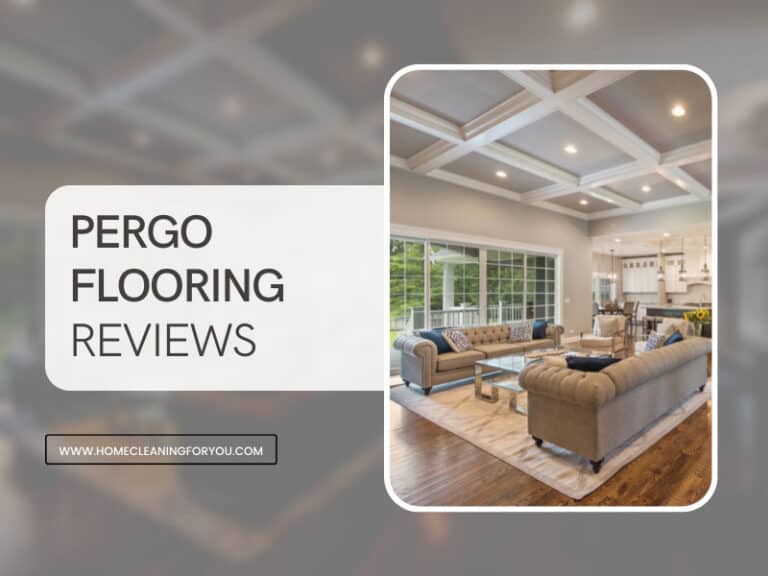
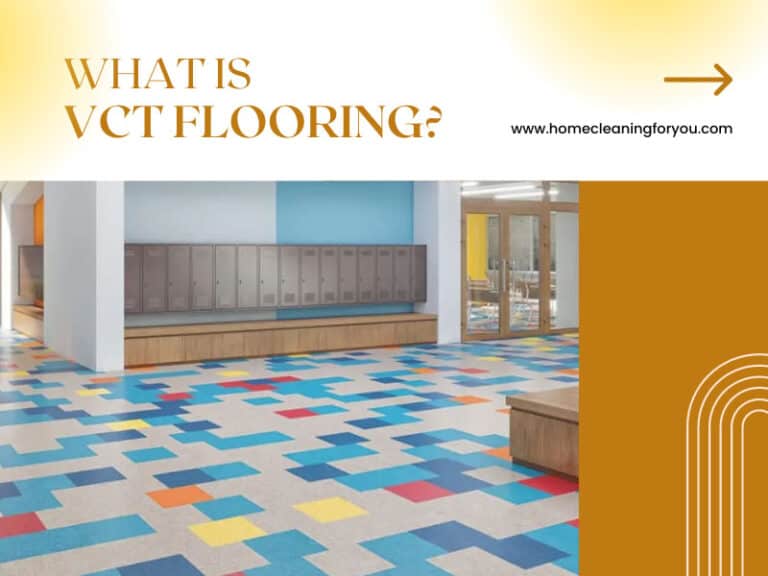
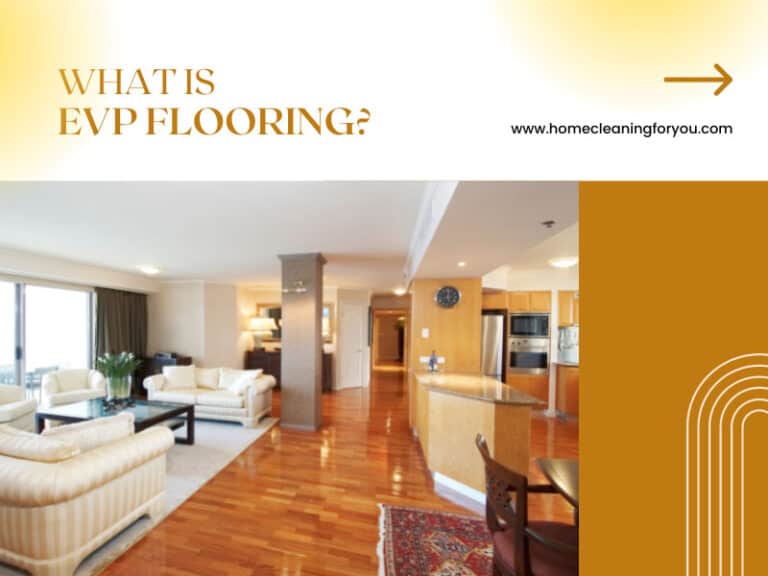
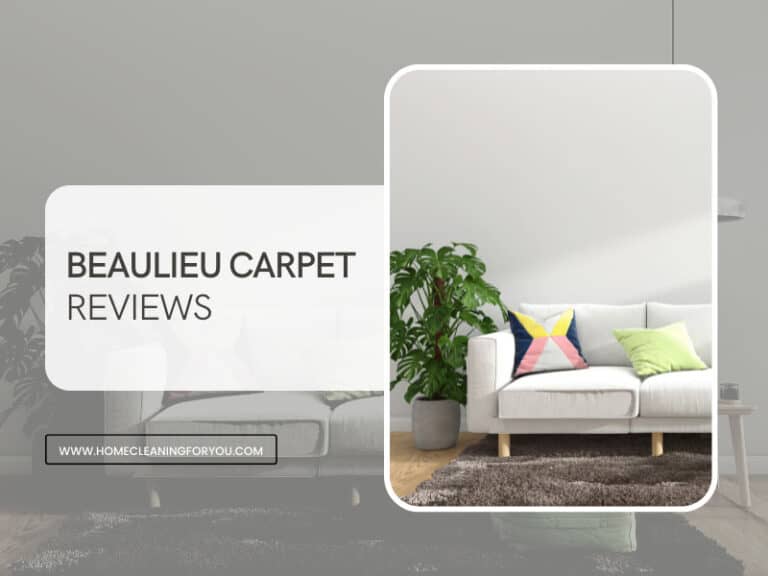
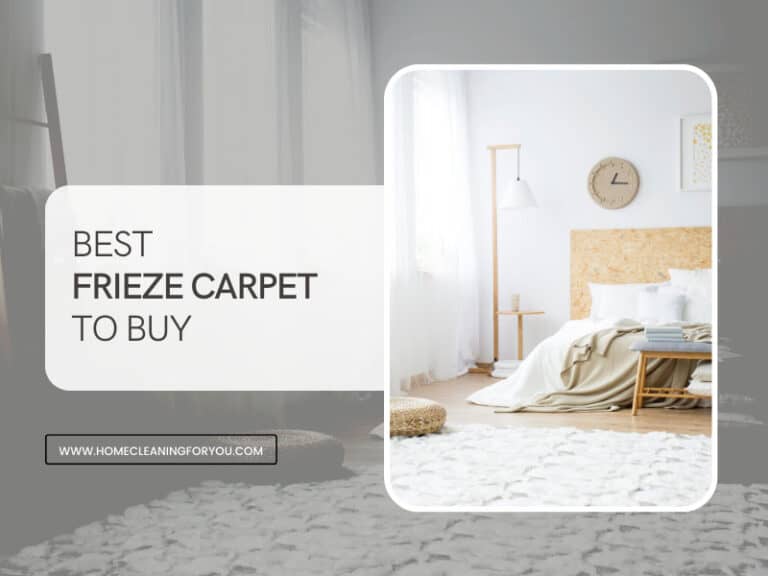
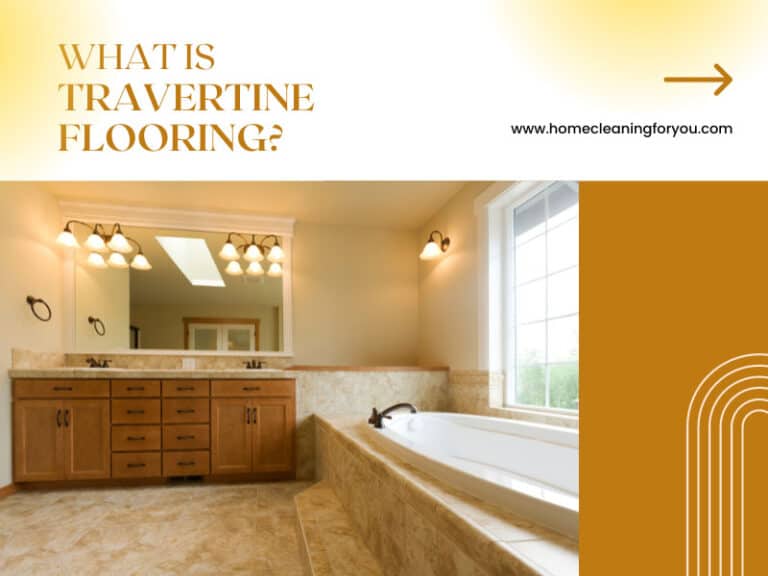
Kevin Jones
Home Cleaning Specialist
Expertise: In-depth Knowledge of Cleaning Agents and Their Uses, Advanced Home Sanitization, Techniques Expertise in Cleaning and Maintaining, Various Floor Types, Innovations in Home Cleaning Tools
School: American College of Home Economics
Kevin Jones is a seasoned home cleaning specialist with over a decade of experience in the industry. A stickler for cleanliness and organization, Kevin brings a systematic and innovative approach to home maintenance. His expertise ranges from traditional methods to modern cleaning technology, ensuring homes are not just clean but healthy environments too.